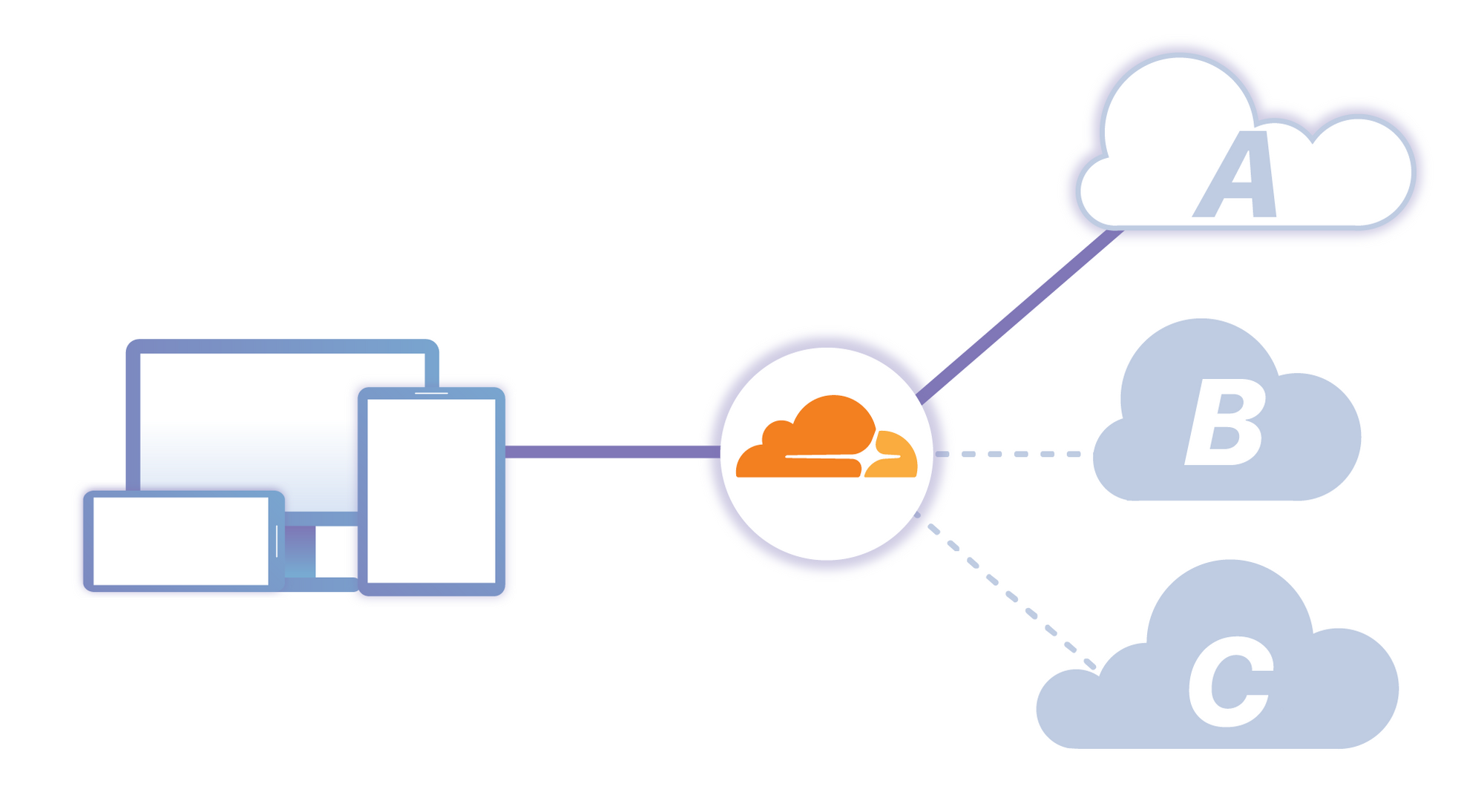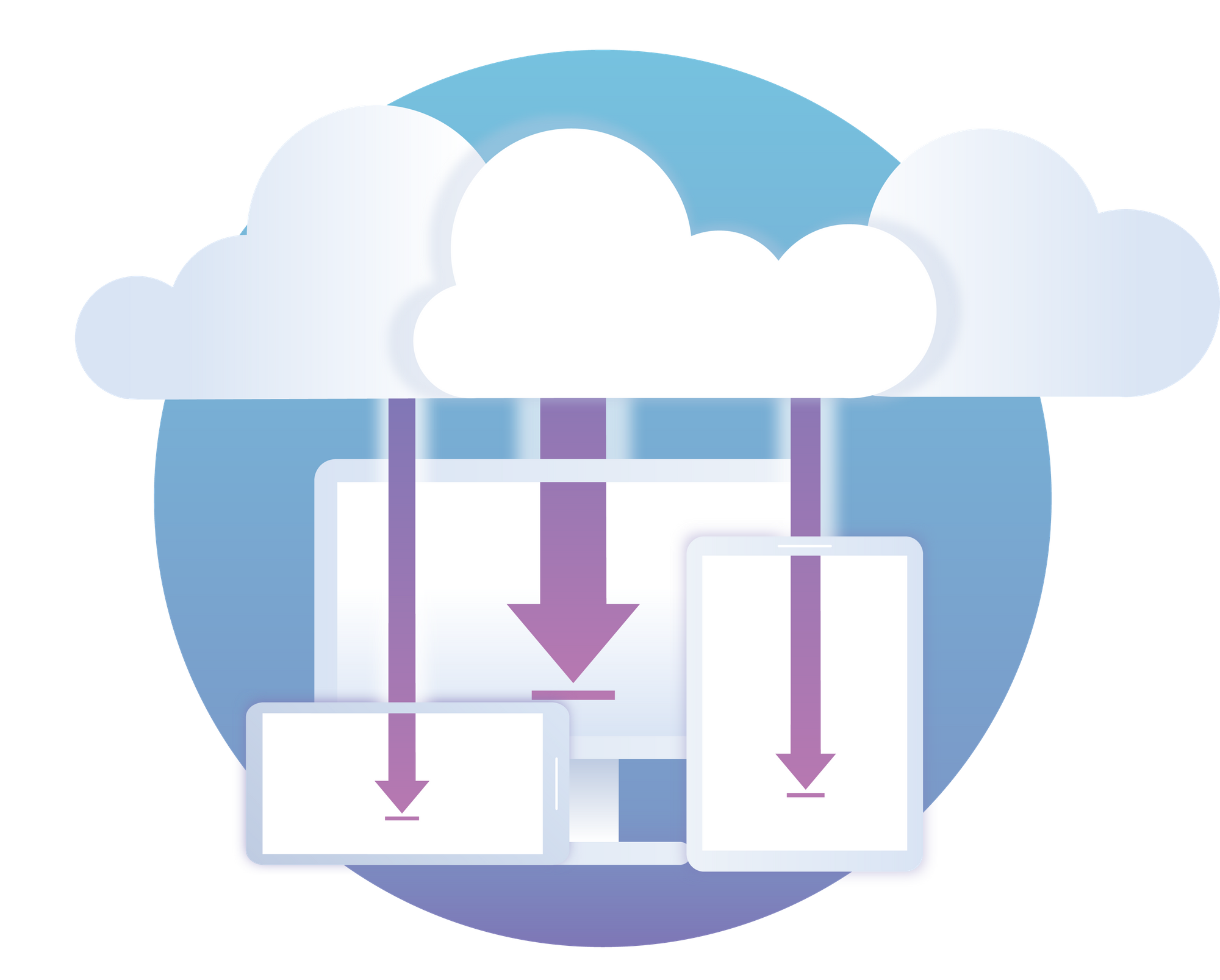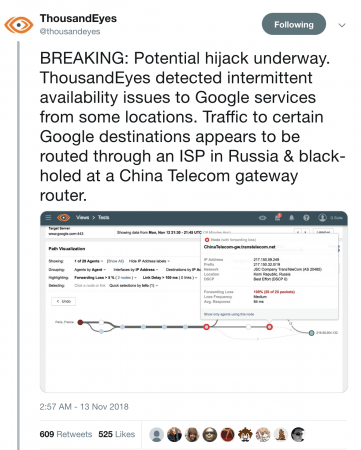Indian Companies Help Propel Cisco’s Strong Q1 2019 Earnings
 It was the company's second quarter of 50 percent-plus growth in India.
It was the company's second quarter of 50 percent-plus growth in India.
 It was the company's second quarter of 50 percent-plus growth in India.
It was the company's second quarter of 50 percent-plus growth in India.
 The Data Lakes Analytics service helps customers that need cloud-native analytics and need to turn raw data into real-time insights.
The Data Lakes Analytics service helps customers that need cloud-native analytics and need to turn raw data into real-time insights.
In today's IPv6 Buzz episode we dive into the challenges of IPv6 adoption in the enterprise. We discuss how and why to set up an internal IPv6 working group, why you need more than the networking team involved, and other key issues. Our guest is Silvia Hagen.
The post IPv6 Buzz 013: Enterprise IPv6 Adoption Challenges And Solutions appeared first on Packet Pushers.
 The collaboration will initially use IBM’s Blockchain Platform to improve reliability and transparency of information collected by different networks when routing international calls.
The collaboration will initially use IBM’s Blockchain Platform to improve reliability and transparency of information collected by different networks when routing international calls.
 At a recent investor conference both AT&T and Verizon said that 5G won’t have an impact on their revenues until at least 2020.
At a recent investor conference both AT&T and Verizon said that 5G won’t have an impact on their revenues until at least 2020.
A major part of China’s several initiatives to build an exascale-class supercomputers has been the country’s determination to rely mostly on homegrown technologies – from processors and accelerators to interconnects and software – rather than turn to vendors outside of its borders, particularly those from the United States. …
China Navigating The Homegrown Waters For Exascale was written by Jeffrey Burt at .


We are tremendously excited about the value our Bandwidth Alliance partner ecosystem adds to our customers. We’re on a mission to help make the internet a better place; and ensuring everyone can access cloud resources at zero-egress rates supports that mission in many ways. It’s an easy way for our clients to build modern, cloud-centric applications without the design constraint and financial burden of egress fees.
The cloudflare bandwidth alliance partner landscape continues to grow, and incorporate a diverse group of partners, with today’s second wave announcement. With over a dozen different partners, the range of choices can quickly become overwhelming. And, while these are all high-quality platforms which we are happy to recommend to our clients - their important differences will help determine the best fit for you, the customer.
In this post, I’ll lay out some of Cloudflare’s approach to this solution design question through the lens of a large client we recently worked with. We apply this approach across our full range of products and services, including many use cases far different from the Storage need we’ll dig into in this post. I hope that this can help all of our clients, or anyone else interested, mirror Continue reading


At Cloudflare, our mission is to help build a better Internet. That means making the Internet faster, smarter, safer, but also more cost efficient with the help of our partners. We are always on the lookout for ways to help save customers money. With that goal we announced the Bandwidth Alliance with our founding partners during our Birthday week.
The key concept of the Bandwidth Alliance is to help reduce and in many cases waive data transfer charges, sometimes known as "bandwidth” or “egress” charges, for our mutual customers. We achieve this in partnership with the founding partners through strongly interconnected networks over peered connections. These connections typically occur within the same facility with no middleman. So, neither Cloudflare nor the cloud provider bears incremental costs. Further, we will also use our smart routing system (read details in this technical blog post) to ensure that all our customers’ traffic on participating cloud providers, once their systems are set up, qualify for this offer.

We are proud to announce the following cloud providers and hosting companies have joined the Bandwidth Alliance in committing to zero data transfer fees for Continue reading

Google recently faced a major outage in many parts of the world thanks to a BGP leak. This incident that was caused by a Nigerian ISP – Mainone – occurred on 12 November 2018 between 21.10 and 22.35 UTC, and was identified in tweets from the BGP monitoring service BGPMon, as well as the network monitoring provider Thousand Eyes.


Google also announced the problem through their status page:
We’ve received a report of an issue with Google Cloud Networking as of Monday, 2018-11-12 14:16 US/Pacific. We have reports of Google Cloud IP addresses being erroneously advertised by internet service providers other than Google. We will provide more information by Monday, 2018-11-12 15:00 US/Pacific.
In order to understand this issue, MainOne Inc (AS37282) is peering at IXPN (Internet Exchange Point of Nigeria) in Lagos where Google (AS151169) and China Telecom (AS4809) are also members.
Google (AS15169) advertise their prefixes (more than 500) through the IXPN Route Server, where PCH (Packet Clearing House) collects a daily snapshot of BGP announcements of IXPN. Unfortunately, 212 prefixes (aggregates of those 500+ announcements) from Google were leaked, which was recorded by BGPMon and RIPEstat.
Looking at the RIPE stats it is evident Continue reading
 The latest update uses an in-house developed open source version of OpenStack that provides for more agility and a smaller footprint to support edge computing environments.
The latest update uses an in-house developed open source version of OpenStack that provides for more agility and a smaller footprint to support edge computing environments.

Last Monday evening — 12 November 2018 — Google and a number of other services experienced a 74 minute outage. It’s not the first time this has happened; and while there might be a temptation to assume that bad actors are at work, incidents like this only serve to demonstrate just how much frailty is involved in how packets get from one point on the Internet to another.
Our logs show that at 21:12 UTC on Monday, a Nigerian ISP, MainOne, accidentally misconfigured part of their network causing a "route leak". This resulted in Google and a number of other networks being routed over unusual network paths. Incidents like this actually happen quite frequently, but in this case, the traffic flows generated by Google users were so great that they overwhelmed the intermediary networks — resulting in numerous services (but predominantly Google) unreachable.
You might be surprised to learn that an error by an ISP somewhere in the world could result in Google and other services going offline. This blog post explains how that can happen and what the Internet community is doing to try to fix this fragility.
 Companies are rebranding their SDN products as SD-WAN, dynamic networking, agile networking, or cloud-native network to avoid being part of the SDN hype.
Companies are rebranding their SDN products as SD-WAN, dynamic networking, agile networking, or cloud-native network to avoid being part of the SDN hype.
 Dell Technologies raised its offer to buy back the stock that tracks Dell’s controlling stake in VMware. Dell previously offered $109 per share. Today the company said it will pay $14 billion, or $120 per share. If shareholders approve this deal, Dell would again become a publicly traded company...
Dell Technologies raised its offer to buy back the stock that tracks Dell’s controlling stake in VMware. Dell previously offered $109 per share. Today the company said it will pay $14 billion, or $120 per share. If shareholders approve this deal, Dell would again become a publicly traded company...
 The analyst firm also predicts that by 2023 more than 90 percent of WAN edge infrastructure initiatives will be based on SD-WAN.
The analyst firm also predicts that by 2023 more than 90 percent of WAN edge infrastructure initiatives will be based on SD-WAN.
docker run --name onos --rm -p 6653:6653 -p 8181:8181 -d onosproject/onosUse the graphical interface, http://onos:8181, to enable the OpenFlow Provider Suite, Network Config Host Provider, Network Config Link Provider, and Segment Routing applications. The screen shot above shows the resulting set of enabled services.
wget https://inmon.com/products/sFlow-RT/sflow-rt.tar.gzStart sFlow-RT:
tar -xvzf sflow-rt.tar.gz
./sflow-rt/get-app.sh sflow-rt mininet-dashboard
./sflow-rt/start.shDownload the sr.py script:
wget https://raw.githubusercontent.com/sflow-rt/onos-sr/master/sr.pyStart Mininet:
sudo env ONOS=10.0.0.73 mn --custom sr.py,sflow-rt/extras/sflow.py \
--link Continue reading
 The platform integrates flow, packet, simple network management protocol, and API data sources to gain better insight into “dark environments,” including SD-WAN.
The platform integrates flow, packet, simple network management protocol, and API data sources to gain better insight into “dark environments,” including SD-WAN.